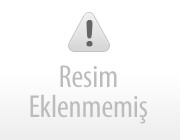Money blog: ‘I can’t stand it’ top chef reveals pet hate in restaurants
| Modul | Genişlik | Derinlik | Yükseklik |
Maintaining petty cash accounts eliminates the need to make an account for every account. To maximise the benefits of your petty cash fund, it’s essential to establish clear guidelines and best practices for its utilisation. Let’s explore strategies to optimise the efficiency and effectiveness of your petty cash system. Consider Ridgewise’s bookkeeping services to assist you in implementing your petty cash system. They can provide guidance on setting limits, maintaining proper documentation, and ensuring compliance.
Adapting to Cash-Only Transactions
Nonetheless, the petty cash fund has some limitations, but the disadvantages of the method are not enough to undermine its usefulness. Every transaction is regulated and monitored when a company has already set rules and regulations regarding money flow. As mentioned before, small expenses or emergency needs require quick action and decision-making. At a minimum, petty cash is reconciled on a monthly basis as part of the month-end close or more frequently, depending on a company’s transaction volume. The log may be a paper ledger or an electronic spreadsheet and in addition to the voucher information it also usually tracks the general ledger account being charged and the running total.
Setting Up a Petty Cash Account
Include these items in the policy, and consider how you can reduce the risk of employee or customer theft. Petty cash works on the imprest system, in which there is an initial amount of money put into an account, which is drawn upon for a specific purpose (in this case, petty cash). When the account goes below a certain specified amount, the system is replenished. In theory, petty cash shouldn’t make up a significant amount of business spend. But spending a few dollars here and there quickly adds up, particularly on a growing team.
Boosting Employee Morale
Once you begin creating the petty cash float, your petty cash account book entry will show a debit of the amount deducted to your petty cash fund. At the same time, it will show a credit petty cash of that same amount to your bank account. The custodian will provide supporting documentation for the petty cash purchases in exchange for more funds.
Step 7: Monitor Spending
Once the replenishment check is cashed, the custodian adds the top-up money to the remaining currency and coins left over in petty cash box so that the original float level is restored. Whenever a payment is made from petty cash, it is recorded through a voucher and/or a logbook, with a receipt attached. The same accounting entry applies when it is finally time to close the petty cash fund. The petty cash balance sheet is also classified under current assets in the balance sheet due to its high liquidity. As assets are ordered by liquidity, petty cash, being easily accessible, is positioned near the top of the petty cash sheet.
The company cannot continue operations without milk and must restock the milk. Therefore, they must purchase at least 3 gallons of milk from the local grocery shop. The set menu at Petrus in Belgravia is available between 12pm and 2.15pm from Tuesday to Friday and has been crafted by executive head chef Orson Vergnaud.
- Raising a formal payment request for such a minor expense would be overkill, so petty cash comes to the rescue again.
- Keeping track of these petty cash expenses helps you to capture all your tax-deductible expenses.
- Overlooking ReconciliationNeglecting regular reconciliation allows discrepancies between recorded and actual cash balances to go unnoticed, potentially leading to financial misstatements.
- With the growth of accounting systems and financial regulation, petty cash evolved into a well-structured and managed tool for addressing small-scale expenses.
- Typically, they will designate a certain dollar amount at which they’ll replenish the fund.
Safeguarding petty cash, segregating duties, and monthly reconciliation are crucial controls for effective management. For any organization, financial efficiency is key to ensuring smooth daily operations. While significant financial transactions often get the spotlight, minor expenses can impact workflow if not handled properly.
Record To Report
Even when employees need to front their own business expenses out-of-pocket, mobile and online applications allow for prompt submission and reimbursement of expense reports. It is a wise fiscal practice to periodically review your petty cash utilization. Depending on the business, you may need to increase or decrease the limit. Or, you may burn through your petty cash so quickly and often that it requires setting a higher replenishment point to ensure you do not run out at a vital point in the future.
Step #1: Set Aside the Cash Reserve
- We are confident in our ability to streamline the operations and bookkeeping side of your business.
- Missing documentation or unrecorded expenses must be addressed to avoid skewing the fund’s balance.
- It can be in the form of actual money, like amounts you haven’t yet deposited in the bank or smaller bills and coins that you keep in the cash register to make change for customers.
- Maintaining a petty cash fund simplifies record-keeping and enables faster transactions.
- This cash reserve helps streamline day-to-day operations and keeps your accounting processes efficient.
- Establishing a petty cash fund involves determining the appropriate amount of cash needed for routine small expenses.
Here, the accounting team will debit the petty cash fund and credit cash for the requested amount. Though seemingly inconsequential, organizations must keep track of petty cash transactions to maintain accurate accounting records and financial reporting. Emergencies can strike at any time, whether it’s a sudden equipment repair or an unexpected client meeting requiring last-minute refreshments. In such cases, having a readily available petty cash fund can be a lifesaver. It lets you handle unforeseen expenses promptly, without disrupting business operations or causing undue stress. Petty cash management ensures you’re prepared for the unexpected, providing a financial safety net when needed.
Mastering Petty Cash Management for Today’s Businesses
Reconciling petty cash ensures the fund’s balance matches recorded transactions. This involves counting the remaining cash and comparing it to the recorded balance. Any discrepancies must be investigated promptly, as they may indicate recording errors or unauthorized withdrawals.

